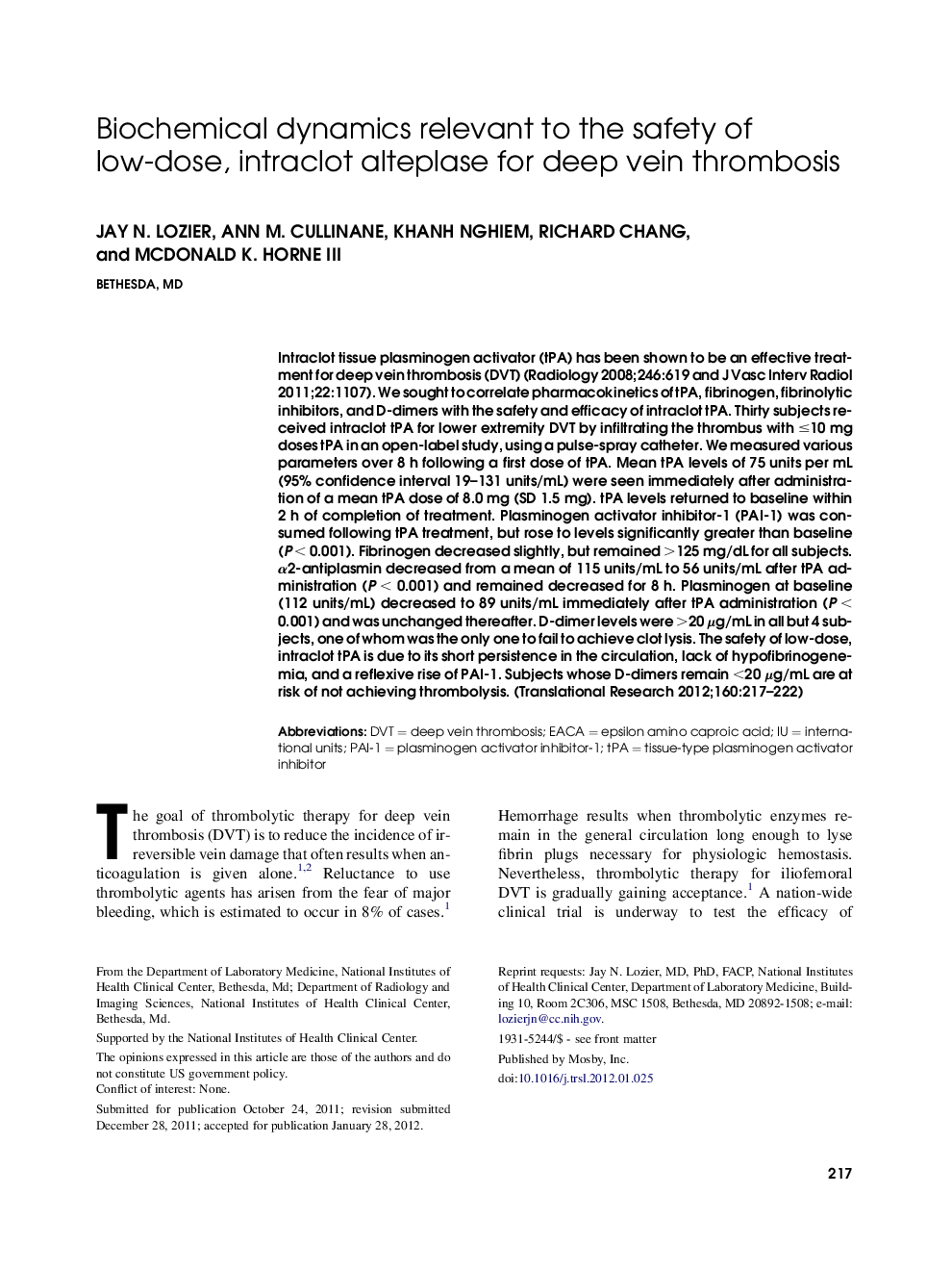| Article ID | Journal | Published Year | Pages | File Type |
|---|---|---|---|---|
| 3840340 | Translational Research | 2012 | 6 Pages |
Intraclot tissue plasminogen activator (tPA) has been shown to be an effective treatment for deep vein thrombosis (DVT) (Radiology 2008;246:619 and J Vasc Interv Radiol 2011;22:1107). We sought to correlate pharmacokinetics of tPA, fibrinogen, fibrinolytic inhibitors, and D-dimers with the safety and efficacy of intraclot tPA. Thirty subjects received intraclot tPA for lower extremity DVT by infiltrating the thrombus with ≤10 mg doses tPA in an open-label study, using a pulse-spray catheter. We measured various parameters over 8 h following a first dose of tPA. Mean tPA levels of 75 units per mL (95% confidence interval 19–131 units/mL) were seen immediately after administration of a mean tPA dose of 8.0 mg (SD 1.5 mg). tPA levels returned to baseline within 2 h of completion of treatment. Plasminogen activator inhibitor-1 (PAI-1) was consumed following tPA treatment, but rose to levels significantly greater than baseline (P < 0.001). Fibrinogen decreased slightly, but remained >125 mg/dL for all subjects. α2-antiplasmin decreased from a mean of 115 units/mL to 56 units/mL after tPA administration (P < 0.001) and remained decreased for 8 h. Plasminogen at baseline (112 units/mL) decreased to 89 units/mL immediately after tPA administration (P < 0.001) and was unchanged thereafter. D-dimer levels were >20 μg/mL in all but 4 subjects, one of whom was the only one to fail to achieve clot lysis. The safety of low-dose, intraclot tPA is due to its short persistence in the circulation, lack of hypofibrinogenemia, and a reflexive rise of PAI-1. Subjects whose D-dimers remain <20 μg/mL are at risk of not achieving thrombolysis.
